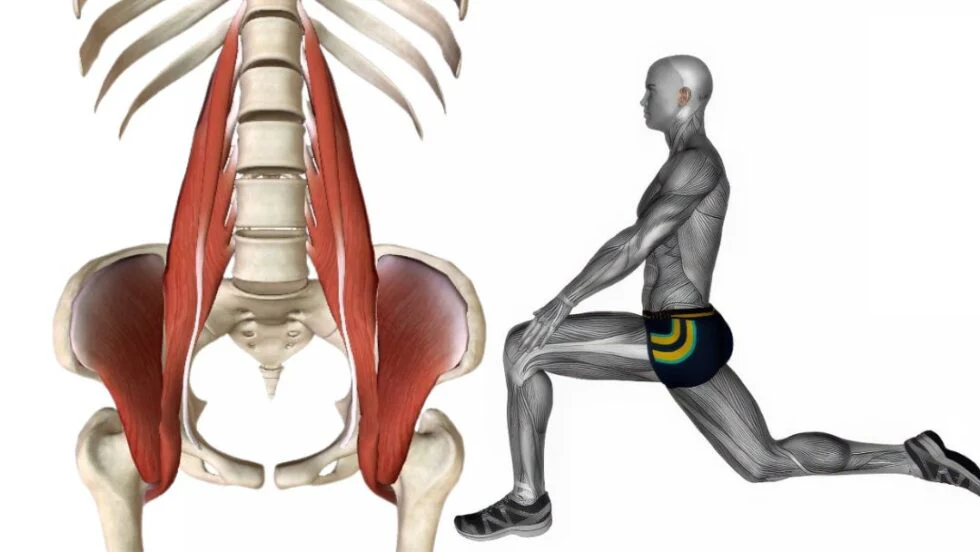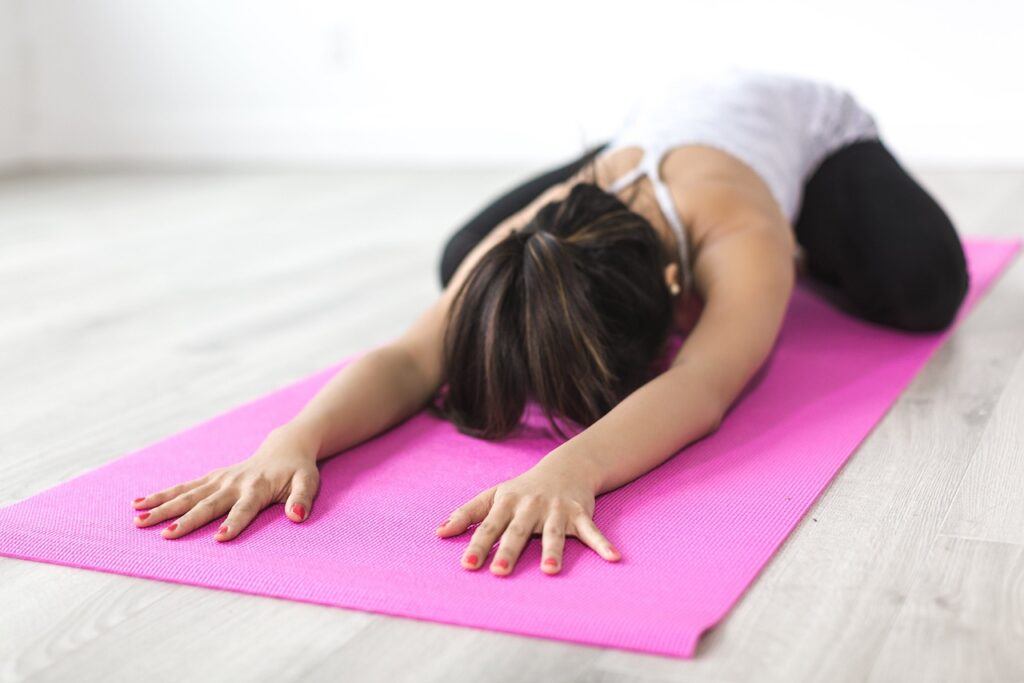The hip flexors do more than just help your hips bend. They’re involved in almost every move you make. From standing up out of a chair, to walking, or even just sitting in good posture at your desk, these muscles do a ton of work. Getting to know how the hip flexors impact your daily movement and posture can help you prevent aches, stay flexible, and move more comfortably. There’s a lot to appreciate about these lesserknown muscles, so I’m sharing what I’ve learned about their role in everyday activities and why caring for your hip flexors is worth the effort.

What Are the Hip Flexors, and What Do They Actually Do?
The hip flexors sit at the front of your hips and upper thighs and have a pretty straightforward job: they help bring your knees toward your chest. They’re made up of several muscles, but the main players are the iliopsoas (which itself is two muscles: the iliacus and psoas major), rectus femoris (part of your quads), and a few smaller helpers like the sartorius and tensor fasciae latae. Each plays its own part in making common movements easier.
Whenever you walk, climb the stairs, run, or even bring your legs up during a situp, your hip flexors are kicking in to make it happen. They’re also working, sometimes a little too much, whenever you sit for a long stretch, which is where posture problems often start.
Hip Flexors in Basic Daily Movements
Every time you make a move that brings your thigh toward your abdomen, the hip flexors are involved. Here’s a quick rundown of how these muscles work into your typical day:
- Walking and Running: With each step, your hip flexors help lift your leg to move forward. They set the pace for your stride and help control the swing of your leg.
- Standing up from Sitting: Rising from a seated position uses your hip flexors to initiate the bend in your hips and bring your torso upright.
- Climbing Stairs: These muscles power your knee up and forward, helping you clear each step easily.
- Getting in and out of Cars: Lifting your leg up and over into a vehicle wouldn’t happen without them.
When hip flexors are tight or weak from too much sitting or not enough use, more than just your workout can suffer. Everyday stuff can start to feel harder, and your posture might take a hit.
Hip Flexors and Posture: Why They’re So Important
Healthy hip flexors are really important for balance and alignment. When these muscles tighten up, which happens a lot to anyone who sits a lot, they pull your pelvis forward. That tilt in the pelvis messes with your natural lower back curve; this often leads to low back pain and slouched posture. I’ve found that sitting with my feet flat on the floor and my knees at hipheight can help, but it’s not a total fix if the hip flexors are already too tight.
Weak hip flexors can also make good posture tricky. Without enough strength to support movement, other muscles (especially in your lower back or thighs) may start picking up the slack. This can throw everything out of balance and contribute to discomfort in other areas.
Common Problems Caused by Tight or Weak Hip Flexors
Most people hear about hip flexors for the first time when something starts hurting, often the lower back or groin. Here are some of the common issues I’ve come across or experienced myself:
- Lower Back Pain: Tight hip flexors pull on the pelvis and strain the lumbar spine. That extra tug can easily lead to a sore back.
- Reduced Hip Mobility: If you’ve ever felt stiff trying to stretch your legs out or get up quickly, your hip flexors might be complaining.
- Knee Discomfort: Sometimes, your knees end up compensating if your hips aren’t moving properly.
- Poor Running Form: Tight or weak hip flexors can shorten your stride and mess with your pace, making running both slower and harder.
Paying a little extra attention to stretching and gently strengthening these muscles can help avoid a lot of nagging discomfort in the long run.

RELEASE YOUR FULL POTENTIAL FOR MORE STRENGTH, BETTER HEALTH, AND ALL DAY ENERGY
How to Keep Your Hip Flexors Healthy
Staying on top of hip flexor health isn’t just about stretching after a workout. The best approach combines gentle stretching, regular movement, and a bit of strength work.
- Stretching Regularly: Simple moves like the kneeling hip flexor stretch or a gentle lunge open up tightness and help you feel less stiff after sitting.
- Strengthening: Moves like straight leg raises, bridges, and resisted marches with a resistance band are pretty handy for keeping these muscles active and balanced. If you have access to resistance bands, adding gentle tension during these exercises can help you keep control and build strength without overdoing it.
- Switching Up Your Sitting: Standing desks, frequent walking breaks, or even just sitting with better posture can stop stiffness before it starts. If you find it tough to use a standing desk, simply taking a twominute walk every hour can give your hip flexors a welcome change.
Consistency is key. Even a small amount of daily attention makes a big difference in how your hips, and your whole body, feel day to day. You might not notice instant results, but over time the benefits stacked up and became much more noticeable for me.
Things to Keep in Mind About Hip Flexor Health
Like with most muscles, there are a few hurdles that come up when trying to take care of your hip flexors. Here’s what I think is worth remembering:
- Overstretching: It’s easy to go too far. Gentle, steady stretches are way better than bouncing or pushing into pain.
- Neglecting Opposing Muscles: The glutes and hamstrings balance out the hip flexors. If you focus only on stretching without some strengthening for these groups, balance can get thrown off.
- Sports or Sitting: Activities with lots of knee lifts (like running or dance) or staying seated all day can result in overuse or tightness. Mixing in a variety of movement patterns helps balance things out.
Overstretching
I used to think that pulling harder on a stretch would fix all my hip tightness, but really, steady and controlled movements work much better for lasting change. It keeps the muscles safe and actually more flexible over time. Remember, a gentle pull is enough—you’ll make progress just by being consistent each day.
Neglecting Opposing Muscle Groups
Focusing just on hip flexors won’t solve everything. Strengthening your glutes and hamstrings gives your pelvis the support it needs for stable, healthy alignment. Exercises like squats and bridges are good ways to balance out all the stretching. Including variety in your routine keeps all your muscles working together and prevents imbalances over time.
RELEASE YOUR FULL POTENTIAL FOR MORE STRENGTH, BETTER HEALTH, AND ALL DAY ENERGY
Managing Activity Levels
If you’re active in sports or sit long hours for work or school, alternating periods of activity and rest can make a big difference. It’s not about stopping what you enjoy or need to do, just making sure to mix it up often. Setting an alarm or reminder to move, stretch, or walk for a few minutes helps support hip flexor health without much effort.
Paying attention to these things can help keep your hips loose and painfree with just a bit of daily effort. If you notice hip tightness creeping in, try some gentle shifts in both strengthening and flexibility work, rather than relying just on one solution.
Simple Hip Flexor Tips for Everyday Life
There are a few little things you can work into your day to keep your hip flexors happy without needing a gym or special equipment:
Move Every Hour: Even just standing and stretching out can help undo some of the tightness from sitting too long.
Try Gentle Lunges: Step one foot forward, drop into a lunge, and stretch the back hip. This one feels great after a couple of hours at a desk.
Mix In Bridge Exercises: Not only do they stretch the hip flexors, but they also fire up your glutes for balance.
Aim for Variety: Walking, cycling, and swimming all use your hips a bit differently. Switching it up builds strength and flexibility across the whole group. Yoga, Pilates, or even dancing can be fun ways to make your hips move in more ways than just sitting or walking, which gives them an extra boost.
Hip Flexors in Real Life: Why They Matter More Than You Think
It’s easy to forget about these muscles, but hip flexors really make daily life smoother. From helping you walk comfortably to making it easy to bend and reach for something under a table, they’re always “on.” When I take a little time to stretch my hips at lunch or do a few bridges in the morning, the rest of my day just feels more comfortable. You might notice your back feels better, your knees ache less, or you just don’t feel as stiff from head to toe.
- Mobility: Fluid, easy movement from hips to knees and back again.
- Stability: Better hip alignment helps protect your back and legs from unnecessary strain.
- Everyday Comfort: Less stiffness and more freedom to move as you like, whether you’re active or just running errands. A little focus goes a long way in making everyday activities smoother and painfree.
Frequently Asked Questions
These are some of the most common things people ask me about hip flexors:
Question: How do I know if my hip flexors are too tight?
Answer: If you feel a pull at the front of your hips when standing up straight or have trouble straightening out after sitting, there’s a good chance your hip flexors need some attention. If you notice that standing fully upright feels harder than it used to, that’s also a clue.
Question: Can stretching alone fix hip flexor discomfort?
Answer: Stretching helps, but combining it with strength exercises for both hip flexors and glutes gives you more lasting results. Adding in regular movement, like walking, can help keep these muscles happy for the long term.
Question: Is it possible to make hip flexors too strong?
Answer: It’s rare, but overtraining one muscle group while neglecting others can throw off your body’s balance. Focus on variety and balanced activity. Add strength gently and pair it with flexibility work to keep everything in harmony.
Final Thoughts
Spending just a little time caring for your hip flexors can pay off with easier movement, better posture, and more comfortable days. Understanding what these muscles do and finding ways to support them fits into almost any daily routine. Small actions really do add up across weeks and months. If you commit to just a bit of extra attention each day, you’ll probably notice the difference in how you move and feel throughout your whole body. Over time, this small effort leads to big rewards for comfort and mobility.
